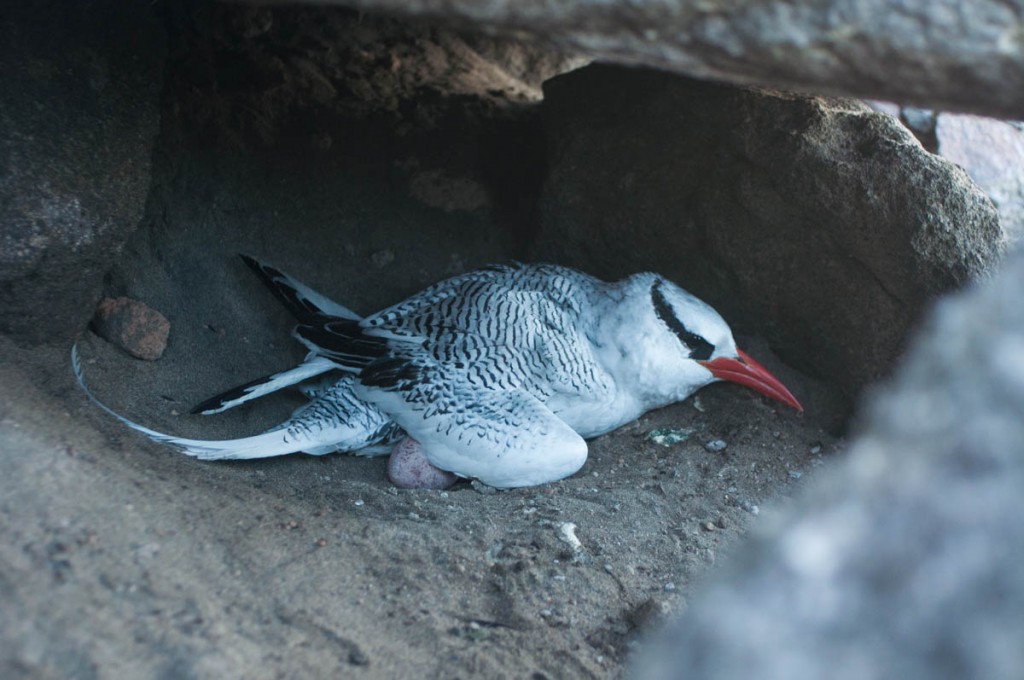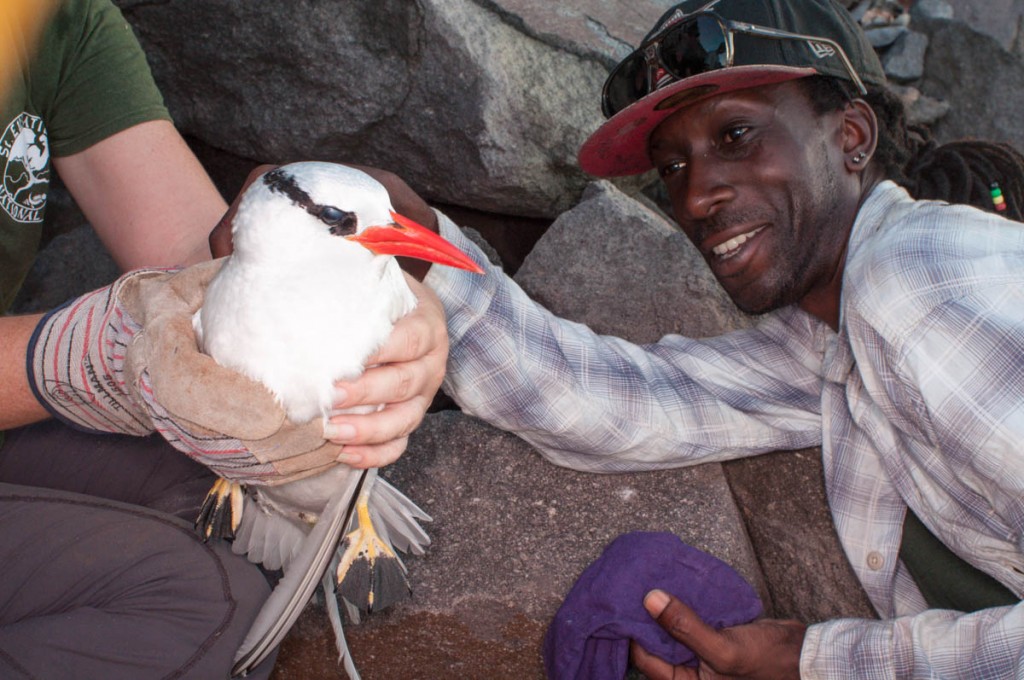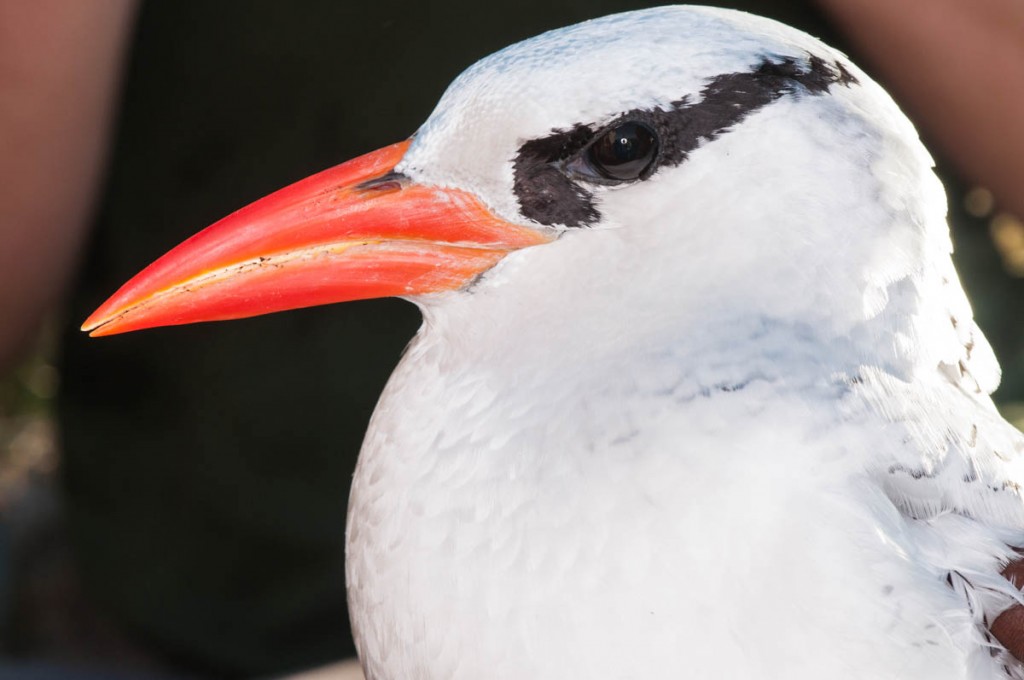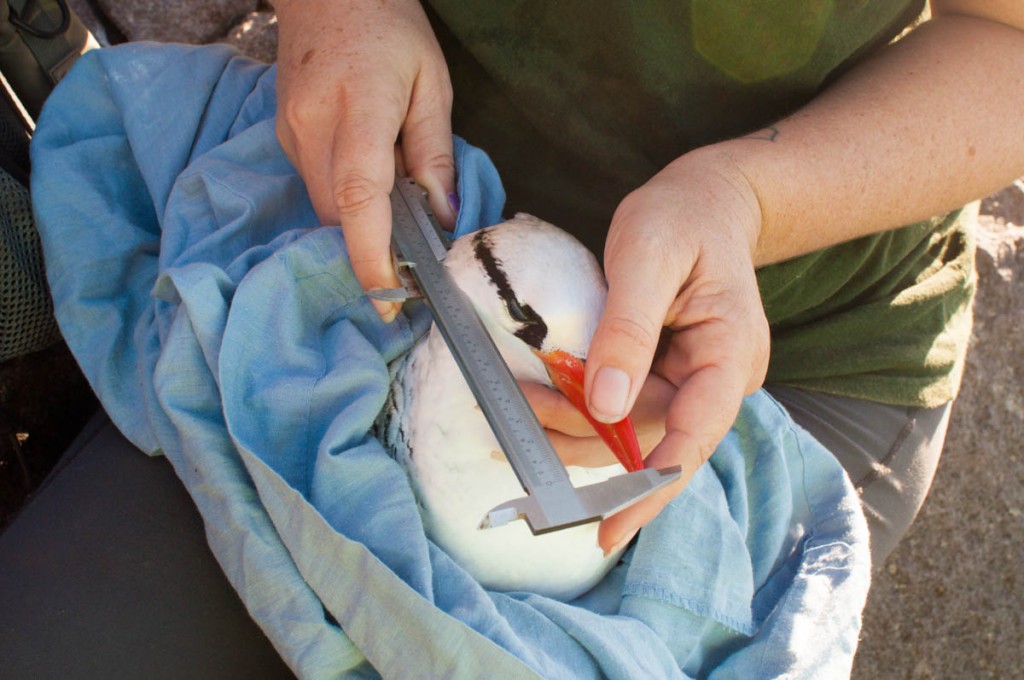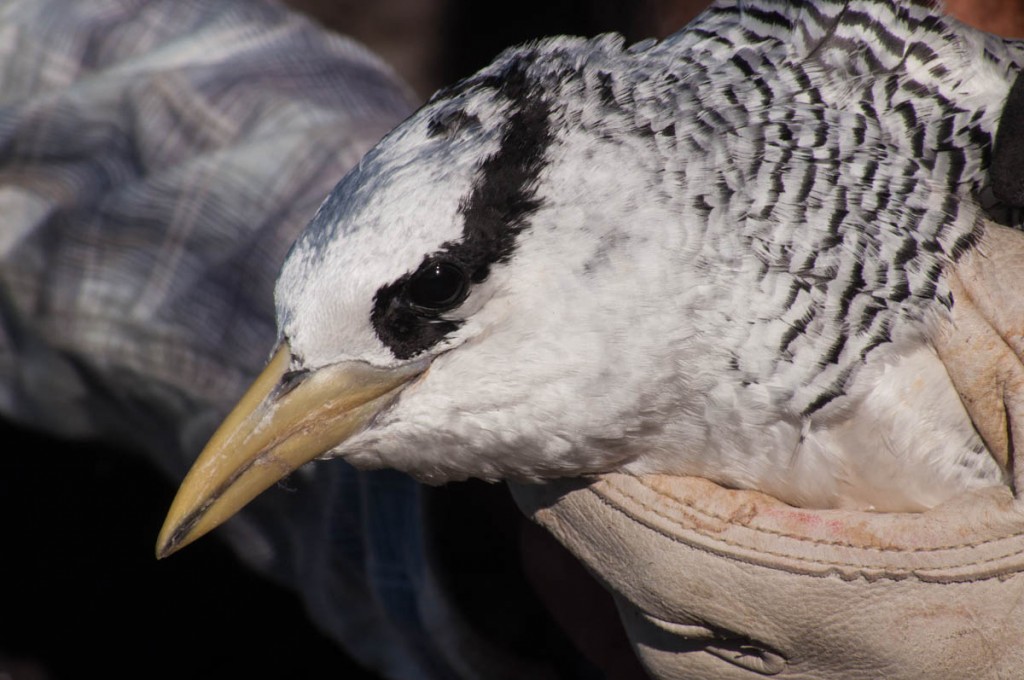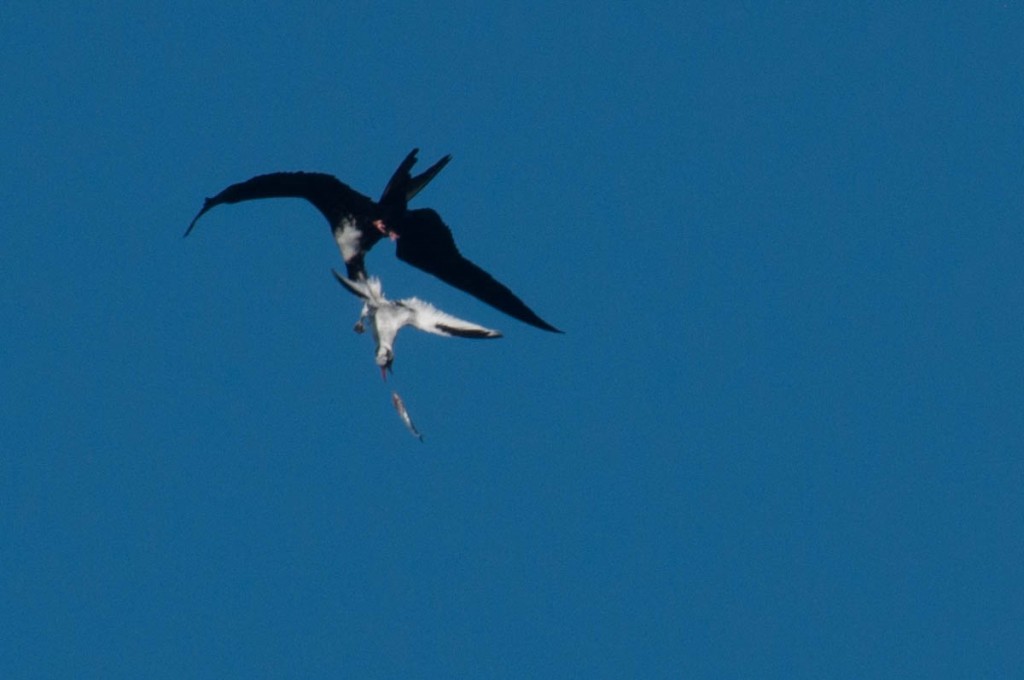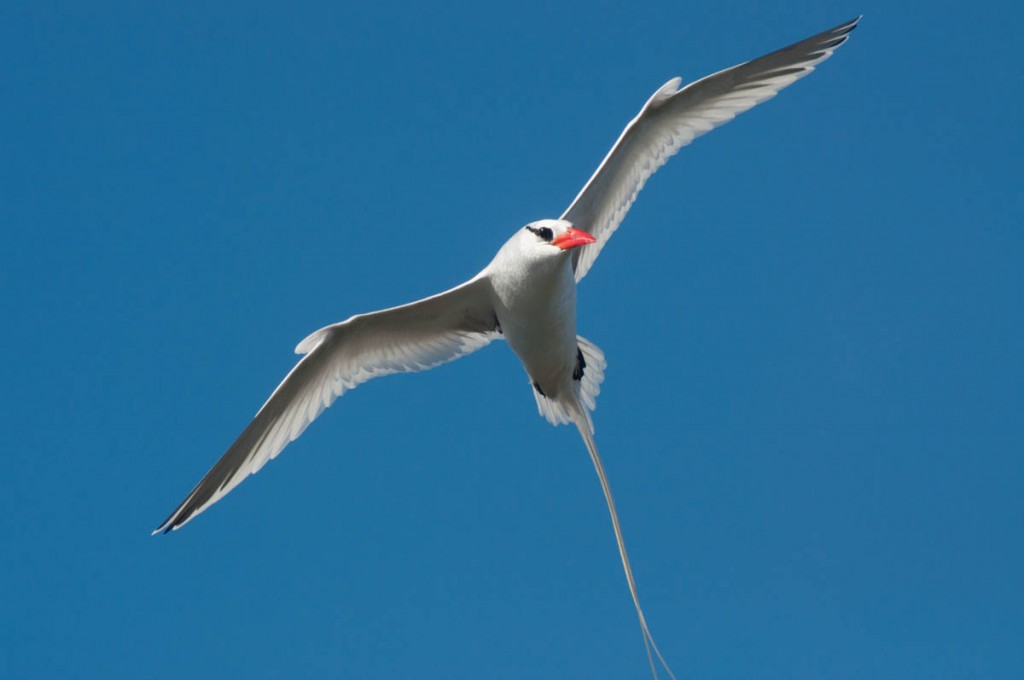Statia is home to one of the largest nesting colonies of Red-billed Tropicbirds in the Caribbean. These birds typically nest in cliffs and rocky hillsides, where they lay a single egg and raise a single chick. As is the case with many native birds that nest on the ground, introduced predators like rats and cats pose a huge threat to successful nesting. In order to understand the rates of nesting success on Statia, the STENAPA team has been monitoring approximately 100 nests on a weekly basis, using motion activated cameras to keep track of activity in nests with eggs between visits.
With their long, streaming tails, these birds are incredibly beautiful. It is a real treat to watch them as they come to and from their nests. A few Magnificent Frigatebirds were patrolling the area, attacking returning birds in order to steal the food they were bringing back to their chicks. Although the frigates are incredibly fast, often the tropicbirds were able to get away.
